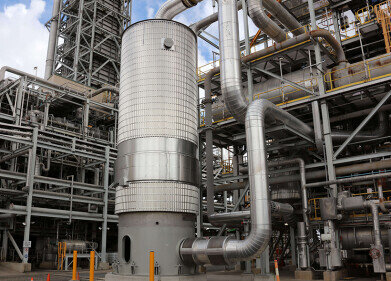Air Clean Up
What Is COP 21?
Jun 07 2021
COP 21 was the 21 Conference of the Parties to the United Nations Framework Convention on Climate Change (UNFCCC). In layman’s terms, it was a summit of 196 countries from around the world gathering to discuss the problem of climate change and negotiating how they could collectively address it. It took place in Paris in December 2015 and is generally regarded as being a positive step forward to tackle climate issues.
One of the main objectives of COP 21 was to come up with a roadmap for all countries to agree on binding targets with regard to their emissions and environmental activity, with an overarching aim of limiting global warming to a maximum of 2°C (and a preferable threshold of 1.5°C) compared to pre-Industrial Revolution levels. While it did achieve the latter, it remains to be seen whether it was successful in outlining the former.
A history of the UNFCCC
The UNFCCC was first established in 1992, when the scientific community began to recognise the damage being wrought on our planet by anthropogenic activity. Emissions of harmful greenhouse gases like carbon dioxide and methane from industry, agriculture and transportation were accelerating the warming of the world’s airways, seas and oceans, which could have disastrous effects going forwards.
However, the early phases of negotiation were not successful due to the difference in views among developed and developing countries. While the 1997 Kyoto Protocol did introduce emissions limits for developed economies, it did not do so for the developing world. In practice, this meant that green energy began to drive forward in places like Germany, the UK and the EU, but was largely neglected in more impoverished parts of the globe in favour of cheaper (but more polluting) technologies.
While that was not such a significant problem at the time of the Kyoto Protocol’s creation, the rapid expansion of economies like China and India has resulted in them becoming among the biggest polluters on the planet. Meanwhile, places like the USA and Canada did not even ratify the protocol, while it was never expanded upon its expiration in 2012. Negotiations in Copenhagen in 2009 were so disastrous as to lead to the subject being almost shelved for six years.
What COP 21 achieved
As such, the Paris summit was intended to rectify the wrongs that had been allowed to go unaddressed in Copenhagen in 2009. With over 150 heads of state in attendance, it remains the largest gathering of world leaders on a single day in history, while representatives from all 196 countries did convene at COP 21. While all of the attending nations did agree to the Agreement in principle, it did not come into effect until 55 nations (representing at least 55% of emissions) ratified it.
Upon ratification, a country is obliged to submit a nationally determined contribution (NDC), which sets a target for a reduction in their emissions by 2030. However, this NDC is not regulated by any higher power, is entirely voluntary and is non-binding, leading many critics to argue that COP 21 does not go far enough in following the lead of scientists to address climate change on a global scale.
Given that industry is responsible for a significant percentage of emissions – and especially in developed countries – it must also fall to private companies to address their business models in order to clean up their emissions and enhance their environmental credentials. This is not only the responsible thing to do, but also the sensible one from an economic and operational perspective, since it will safeguard them and future-proof them against any upcoming legislation.
Events
IWA World Water Congress & Exhibition
Aug 11 2024 Toronto, Canada
Aug 25 2024 Stockholm, Sweden and online
Sep 03 2024 Mexico City, Mexico
Sep 03 2024 Mexico City, Mexico
Sep 03 2024 San Diego, CA, USA














